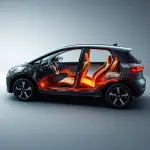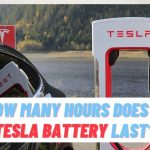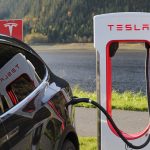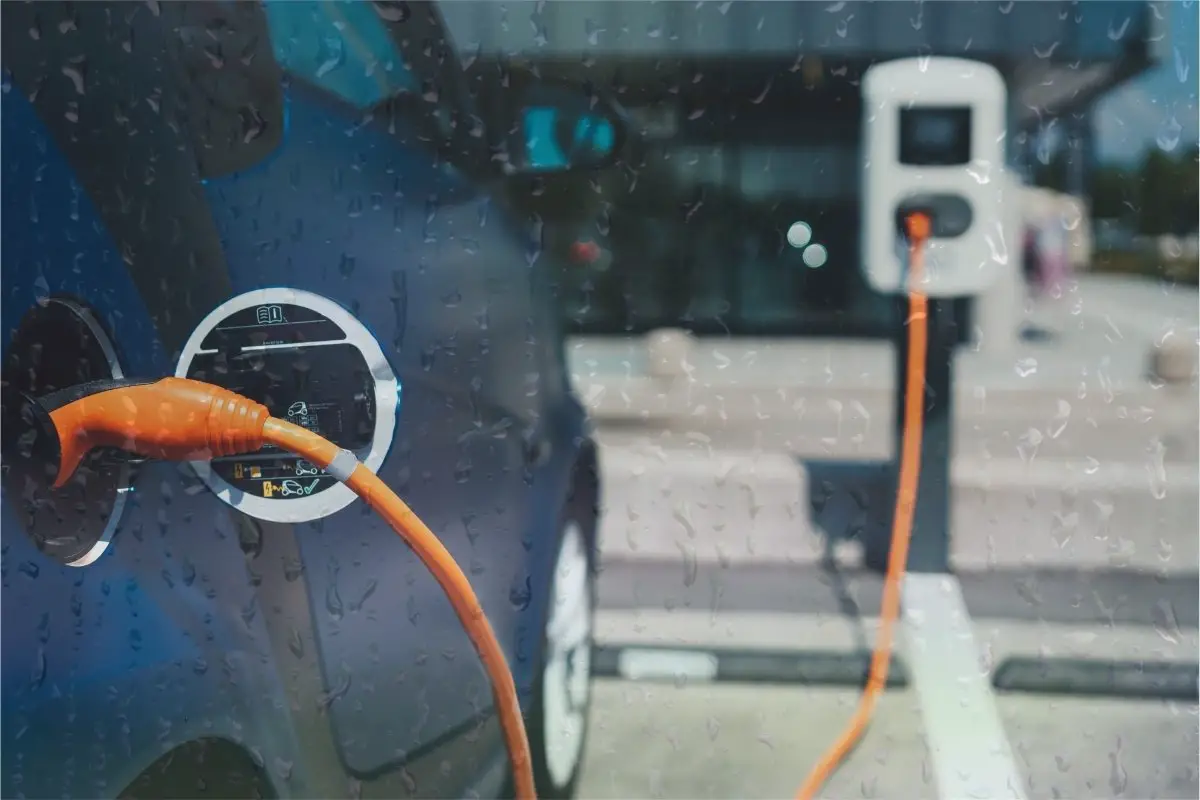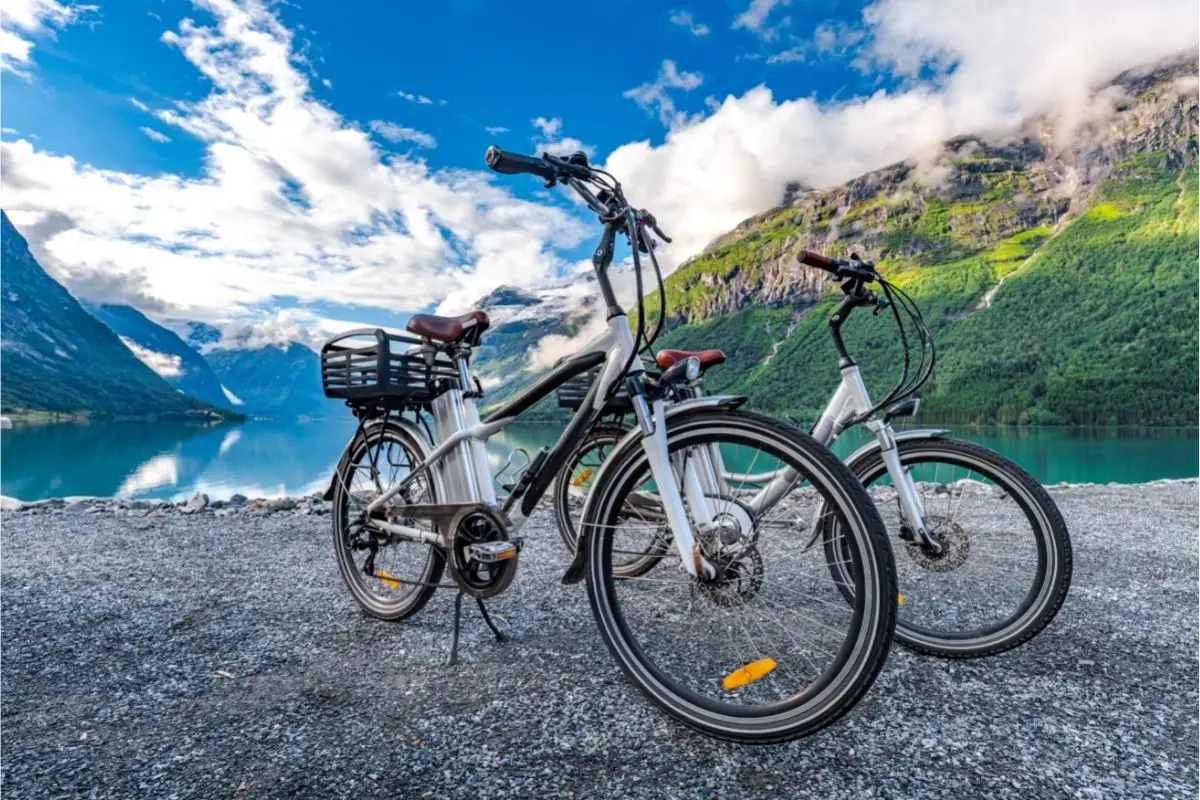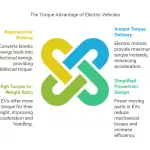Last Updated on November 7, 2022 by
Electric cars are becoming increasingly popular. They are far better for the environment than their diesel and petrol counterparts, and they can come with a huge range of cool features.
However, many people may still be a little skeptical about electric cars, particularly when it comes to charging.
At the end of the day, you don’t have to be an expert to know that electricity and water are two things that should remain separate.
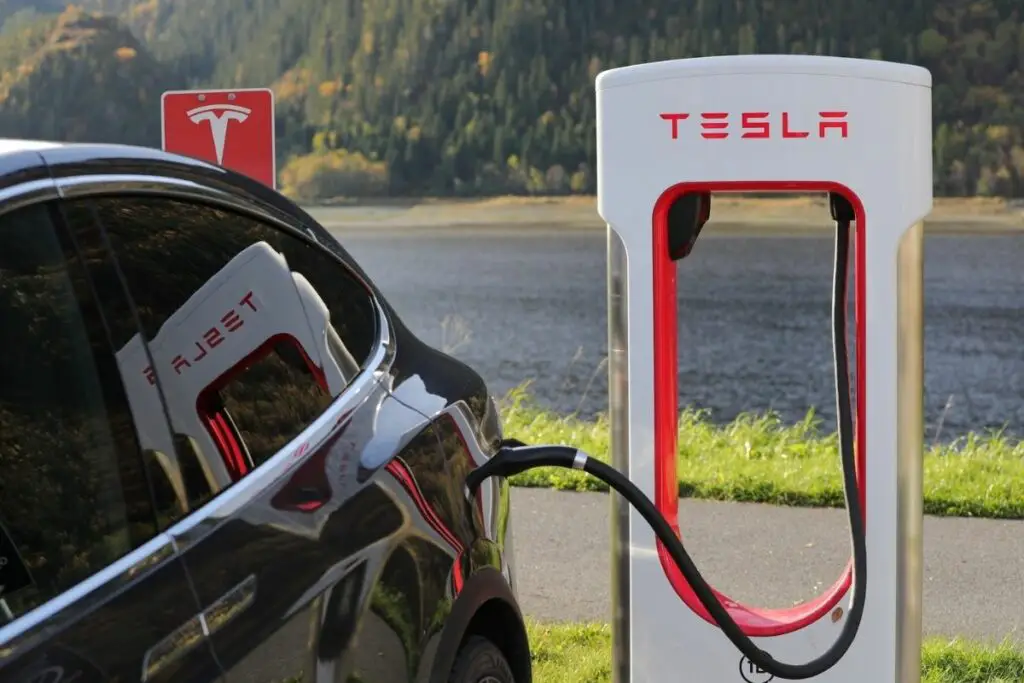
If you are feeling curious as to how electric cars such as Teslas can work and be charged in wet weather conditions, check out our ultimate guide below.
We cover everything, from how to charge a Tesla in the rain, to the most efficient way of charging your Tesla outdoors at home, and everything in between! After reading this article, you will feel like an electric vehicle expert – take a look!
Can You Charge an Electric Car at Home in the Rain?
We were all taught in school that the combination of electricity and water is always a terrible one. So, you’re likely wondering, how on earth are you supposed to charge an electric car when it is raining outdoors?
However, there is no need to worry. Electric cars can absolutely be charged at home, or at public charging sites, whilst it is raining.
Thanks to a completely insulated charging cable and the watertight fit between the charging port and the vehicle, electric cars can be very safely charged in the rain.
Is it Safe to Charge an Electric Car in a Thunderstorm?
Charging your electric car in a thunderstorm is just about as safe as you yourself being outside during a thunderstorm. As such, most people feel completely comfortable charging their electric car during a thunderstorm.
However, it is worth noting that many people prefer to unplug their electric cars if they are experiencing heavy lightning.
Even though the chances of the lightning hitting your car are minimal, if it does directly strike it, it will cause damage to the charger and potentially the vehicle itself.
Can You Charge a Tesla in the Snow?
Like rain, snow should not be a problem when it comes to charging your Tesla outside. However, if the temperature is particularly cold, there is a possibility that the charging port could freeze.
If this happens, you need to activate either the Preconditioning (on HI) or the Defrost feature (in the tesla app).
If your charging port is frozen, it may still allow you to charge the Tesla, but at a lower charging rate. You will know this is happening due to a blinking amber indicator.
How long can a Tesla battery last in winter? Battery efficiency reduces the colder in gets. As a general rule, you can expect to reduce your range by 30 to 40%, due to heater usage and keeping the battery warm.
Is a Tesla Good in the Snow?
You can drive a Tesla in the snow. However, the experience is likely to be quite different than that of driving a petrol or diesel-fueled car in the snow. This is the case for a few different reasons.
First, electric cars deliver their torque at 0 rpm. From one perspective, this is one reason that people are drawn to electric cars because it makes for a truly fun and spirited driving experience in regular conditions. However, it isn’t ideal in icy conditions.
Secondly, extreme weather can have an impact on the efficiency of an electric vehicle. In heavy snow, it is likely that your electric car will have a much shorter driving range, regardless of how fully charged it is.
Can You Drive a Tesla in the Rain?
You can absolutely drive a Tesla in the rain. In fact, Tesla cars drive very smoothly in heavy rain.
Thanks to their deep-tread tires, 4-wheel drive, all-wheel-drive drivetrains, and heavyweights, Teslas are great when traveling in the rain. Their motors are perfectly sealed, so you don’t need to worry about water getting in!
Many electric car advocates argue that electric cars are safer in the rain than their diesel and petrol counterparts because their engines can’t be flooded.
However, despite Tesla’s ability to drive through deep waters, testing this feature is likely to be a very bad idea. Even though it would cause more damage to a gas engine, it could cause some damage to a Tesla.
Can a Tesla Survive a Flood?
Electric cars tend to fare much better in flood conditions than those with gas engines.
In fact, even Elon Musk has stated that, for a limited amount of time, the Tesla will work as a boat. Also, many people have shared videos of their Teslas driving through terrible flood conditions successfully.
However, it is important to note that driving through water is incredibly dangerous, particularly if that water is deep.
It is likely that it will cause at least some damage, and if exposed to such conditions for too long, the Tesla may require serious maintenance. So, only drive in such conditions if it is absolutely necessary to do so.
Tesla Wall Connector
Now that you know that charging a Tesla at home in the rain is completely safe, we thought that we’d include a section on the fastest way to charge a Tesla outdoors at home.
A Tesla Wall Connector allows you to charge your vehicle overnight. It is the most efficient and convenient home charging solution. You can purchase one here if you’re interested.
Is a Tesla Wall Connector Necessary?
No, the Tesla Wall Connector is not completely necessary. You can use a normal outlet to charge your Tesla, and this method will work well.
However, if you plan on charging your Tesla outdoors, we do recommend that you consider purchasing a Wall Connector. They make life a lot easier, and they charge your vehicle much faster.
Final Thoughts
Teslas and other electric vehicles are becoming more and more popular. However, as this completely new way of driving becomes mainstream, it is likely that many people will have questions regarding its safety in different weather conditions.
We hope that this article has helped to put your mind at ease when it comes to charging electric cars in the rain.
- Lavender Oil - February 2, 2025
- Electric Cars with Solar Panels On Roof: The Future of Sustainable Driving - January 29, 2025
- Best Cheapest Electric Car Reddit Comments - January 23, 2025

